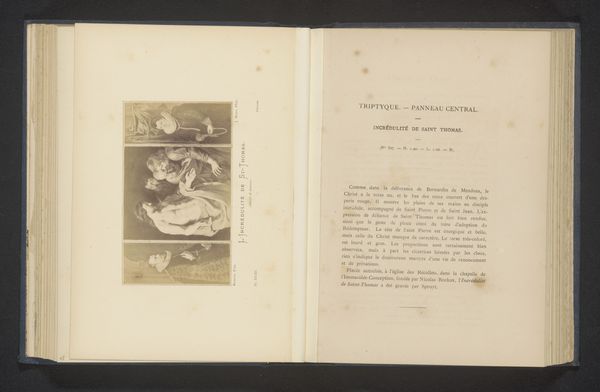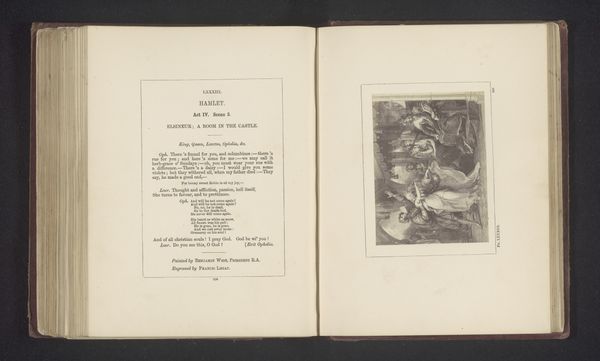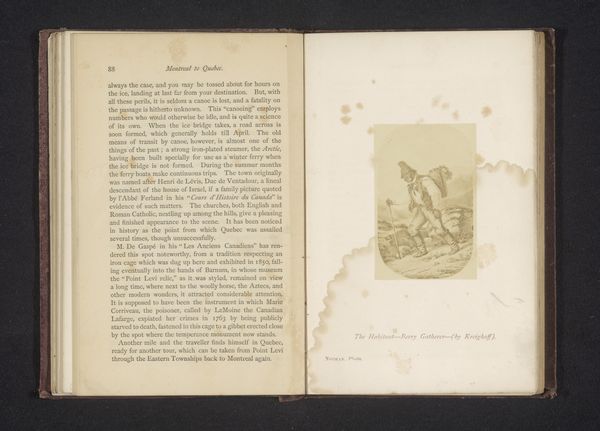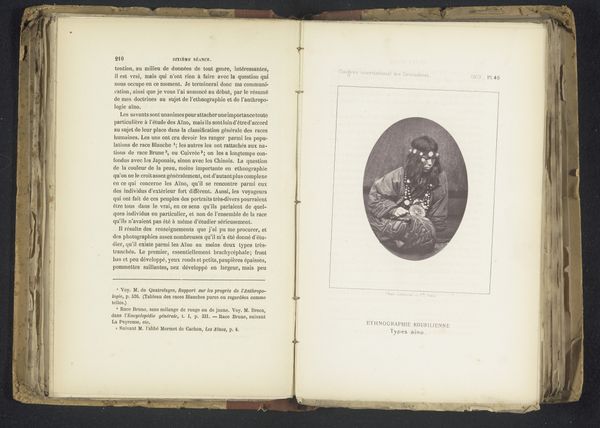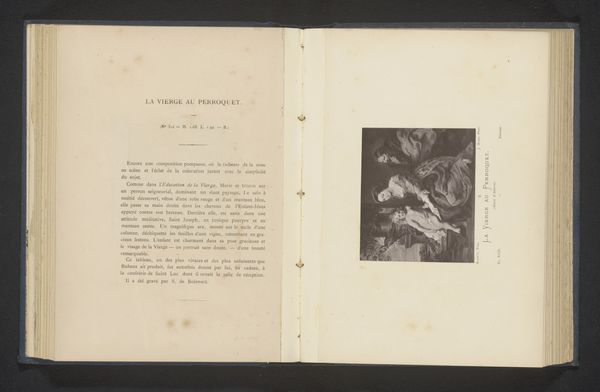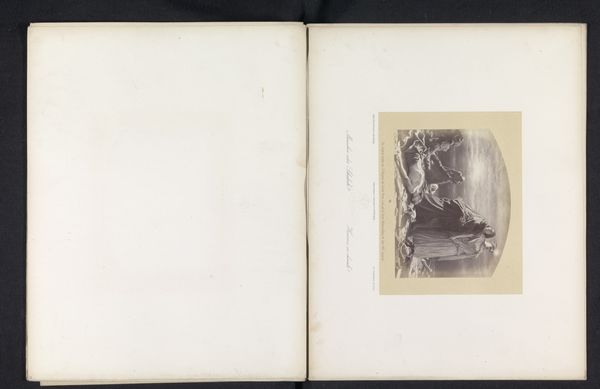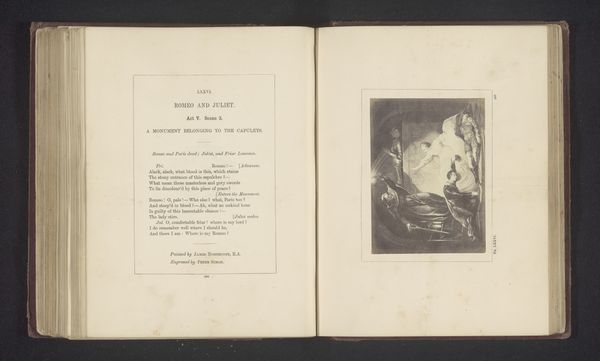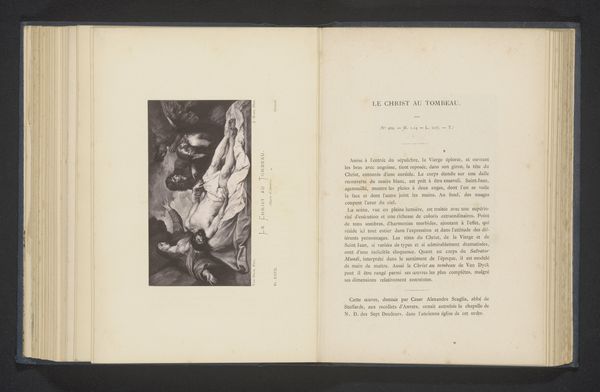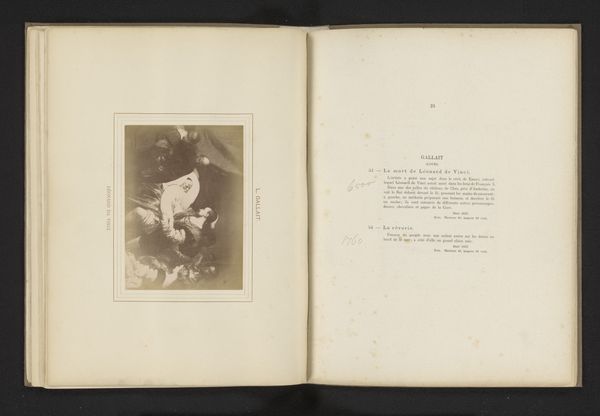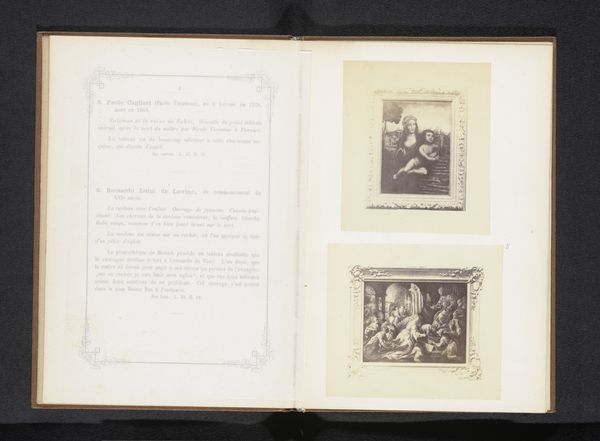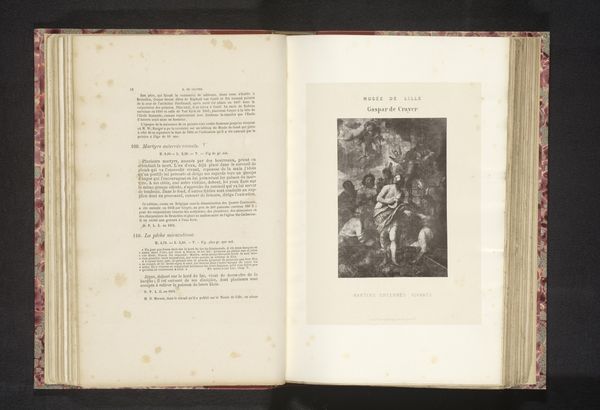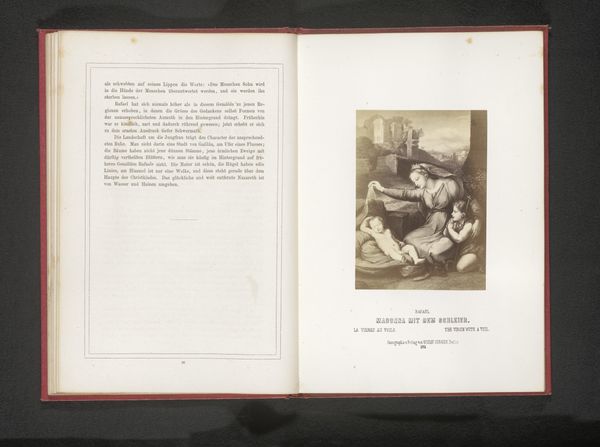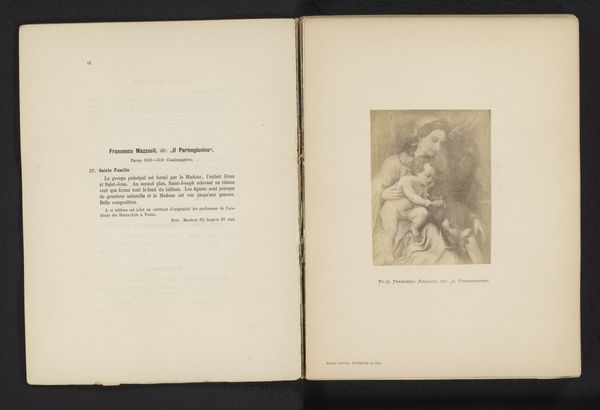
Fotoreproductie van een schilderij van twee mannen die roken en drinken before 1876
0:00
0:00
print, etching, paper, photography
#
dutch-golden-age
# print
#
etching
#
paper
#
photography
#
genre-painting
Dimensions: height 95 mm, width 75 mm
Copyright: Rijks Museum: Open Domain
Curator: Here we have a photographic reproduction of a piece predating 1876, titled "Fotoreproductie van een schilderij van twee mannen die roken en drinken." This piece emulates the Dutch Golden Age style. It is printed on paper utilizing etching. What's your immediate impression? Editor: The somber tones immediately suggest an enclosed space and the close proximity of the men perhaps hint at shared hardship or quiet camaraderie. It looks like they are seeking solace. Curator: This genre painting places ordinary individuals at center stage, diverging from grand historical or mythological narratives common at the time. By choosing subjects engaged in such quotidian acts as drinking and smoking, it speaks to larger cultural shifts concerning the lower social strata gaining visibility. Editor: Exactly! In its representation, it prompts questions regarding class and masculine identity, doesn’t it? The setting seems like an unglamorous tavern—an intriguing intersection to observe performative norms and behaviors which are typically inaccessible within dominant circles of power. Are the means of indulging in tobacco and spirits democratizing practices here, offering men from disparate walks of life entry into shared social rituals despite obvious socio-economic gaps between them? Curator: The composition reflects socio-political realities, as the art market during that time saw increasing demand from a burgeoning middle class wanting to see themselves reflected in the artworks they purchased. The public role of art evolved drastically during the Dutch Golden Age. Editor: It definitely underscores the art's potential for social commentary and representation. Considering today's landscape, it might invite reflection on patterns which have endured. We must also remember historical biases in interpreting those scenarios though—for one example it may ignore potential for harm inflicted to all women surrounding spaces with solely inebriated males at leisure! Curator: It gives much pause to critically examining that intersection indeed. Editor: Absolutely; I appreciate gaining perspective of the socio-economic implications, for such nuanced and intimate glimpse on class divisions!
Comments
No comments
Be the first to comment and join the conversation on the ultimate creative platform.
